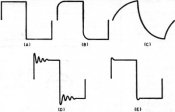As per the title, I always see voltage drop being talked about around the power going to the pixels, but no real mention of the data line.
I'm assuming eventually the length of cable leading to pixels will become an issue with the data line, but at what point is this? And is there any way to inject power into the data line to be able to run a larger distance from the controller?
I'm assuming eventually the length of cable leading to pixels will become an issue with the data line, but at what point is this? And is there any way to inject power into the data line to be able to run a larger distance from the controller?


